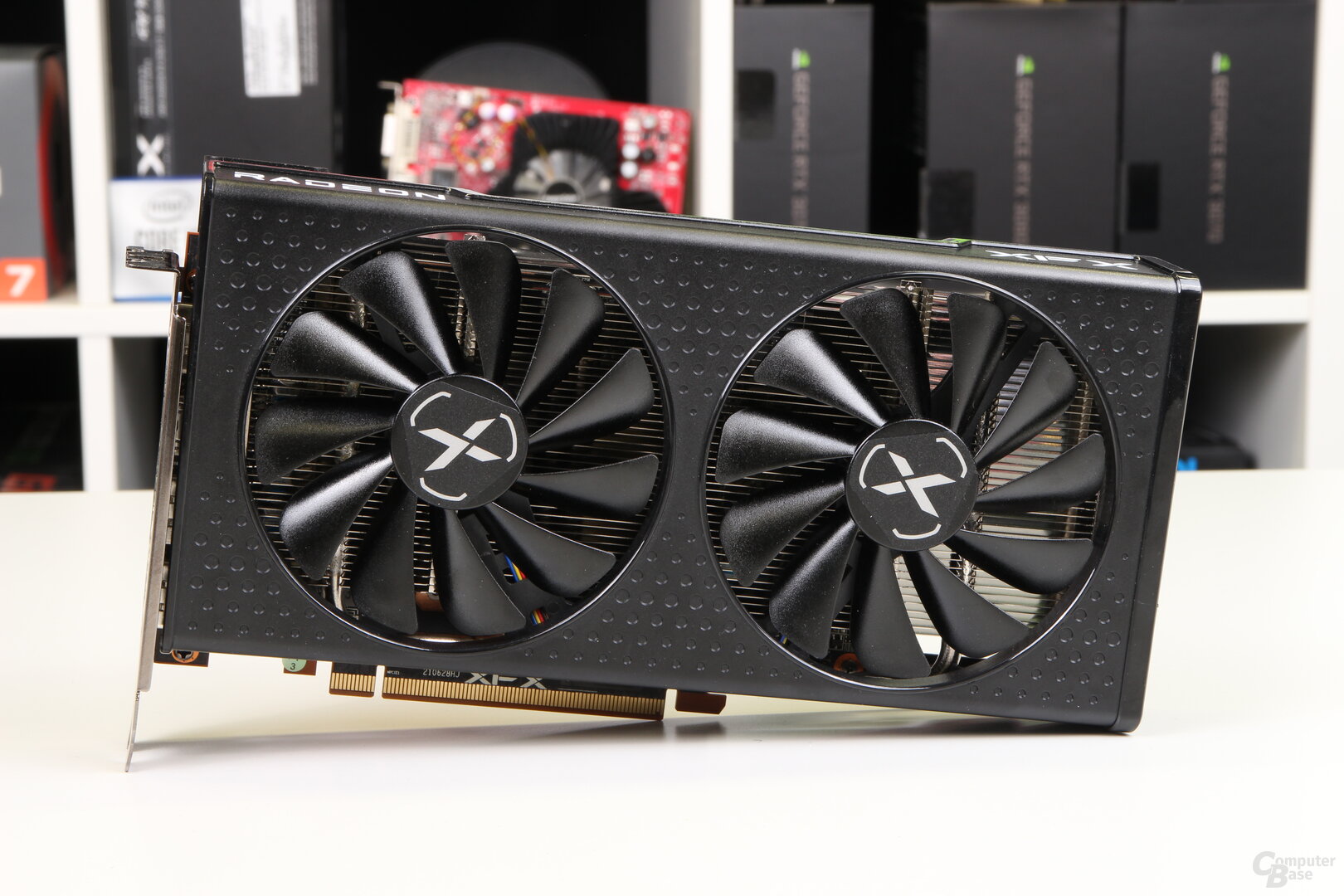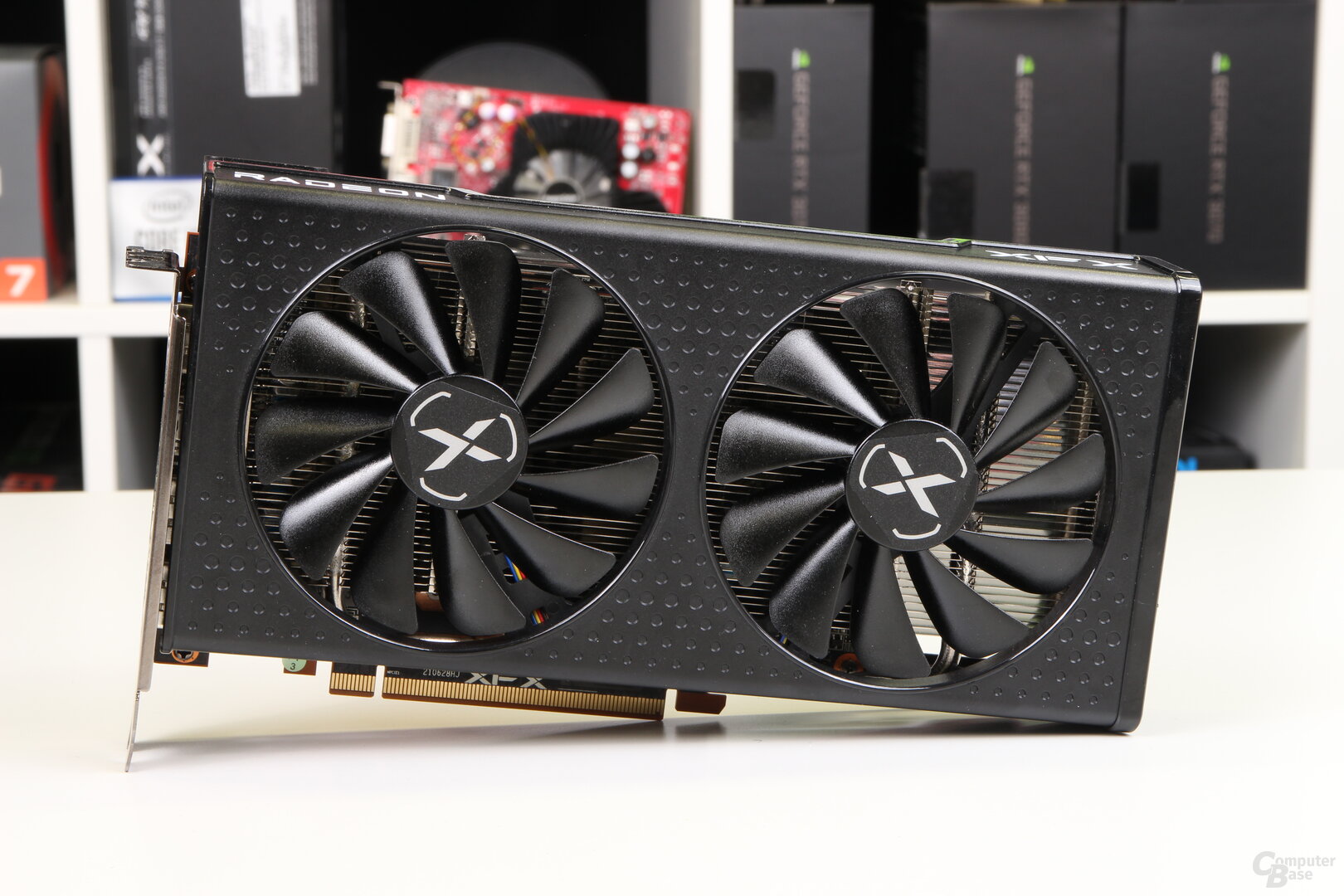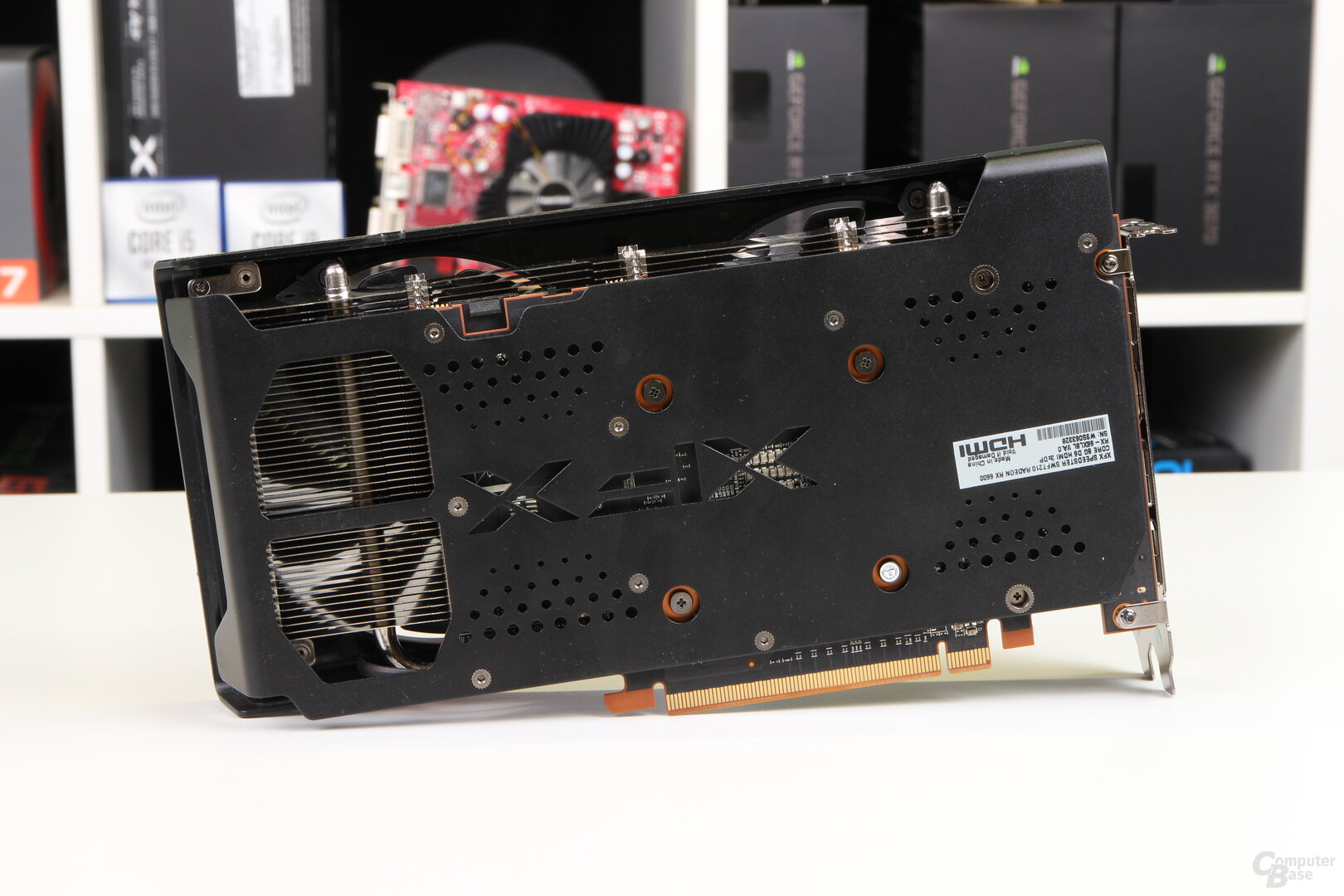With the Radeon RX 6600, AMD is sending the smaller brother of the Radeon RX 6600 XT into the race. The entry-level graphics card is technically based on the XT variant, but has been slimmed down in some areas. The target is the Nvidia GeForce RTX 3060, which should be narrowly beaten by the new RDNA-2-Radeon.
Table of contents
- 1 A restrained performance for 339 euros
- Exactly like the RX 6600 XT, only a little slower
- The GPU is Navi 23 partially deactivated
- The XFX Radeon RX 6600 Speedster Swft 210 in detail
- 2 clock rates, benchmarks in Full HD & amp; WQHD and ray tracing
- Test system and test methodology
- The actual average clock rates under load
- Benchmarks in 1,920 × 1,080
- Benchmarks in 2,560 × 1,440
- Benchmarks with ray tracing in Full HD
- 3 Volume, temperature, power consumption and OC
- Volume & amp; Cooling
- Power consumption: games, YouTube, desktop
- Energy efficiency in FPS per watt
- The RX 6600 can be moderately overclocked
- 4 Price and conclusion
- RRP and market price
- Conclusion
AMD has the entry-level Radeon RX 6600 XT RDNA 2 Segment brought. Now you take a further step, because the new Radeon RX 6600 is located below it, but should still be able to play AAA games smoothly in 1,920 × 1,080 and achieve the performance of the competing GeForce RTX 3060 from Nvidia.
Just like the RX 6600 XT, only a little slower
To achieve this, the small Navi-23 GPU is used again, which simply comes with a reduced number of execution units, while the technology itself remains identical. Both features and memory expansion with 8 GB have remained the same as the larger XT model. AMD uses 339 euros as the RRP, 41 euros less than the Radeon RX 6600 XT. From today the graphics card will be available in stores.
The graphics card will definitely go into the parade, however, in the critical delivery situation. Even if the launch of the Radeon RX 6600 XT went relatively well for the current situation – after all, there were models for several hours to a few days to buy at acceptable prices close to the RRP – it now looks just as catastrophic as it does for all other graphics cards. It can be assumed that the Radeon RX 6600 will suffer a similar fate.
In the test: A custom design by XFX
The XFX Radeon RX 6600 Speedster Swft 210 came to the editorial office for the test. The graphics card is a simple implementation without a lot of gimmicks, which adheres to AMD's reference specifications regarding clock rates and power consumption, but is equipped with its own cooling system.
The GPU is Navi 23 in partially deactivated
Like the Radeon RX 6600 XT, the Radeon RX 6600 is equipped with the 11.1 billion transistor heavy and 237 mm² Navi-23 GPU. In contrast to the large model, which uses all available units on the chip, the Radeon RX 6600 has switched off individual units.
This is exclusively about the compute -Units, of which the full 32, but only 28 pieces are no longer working, which results in 1,792 FP32 shader units. With the same clock rate, the computing power of the latest model is therefore 12.5 percent slower than that of the XT model.
Apart from the CUs there are only a few differences
Apart from that, the Radeon RX 6600 is technically identical to the Radeon RX 6600 XT. There is still a 128-bit wide memory interface and thus also an 8 GB GDDR6 memory. The 32 MB Infinity Cache is still operated at 1.8 GHz. And the PCIe interface is still limited with eight PCIe 4.0 lanes compared to larger graphics cards.
Ultimately, however, AMD does not stop at only distinguishing the Radeon RX 6600 from the “XT” through the FP32-ALUs. The chip developer calls a game clock of 2,044 MHz and a turbo of up to 2,491 MHz for the latest model, which is 315 MHz and 98 MHz lower than the Radeon RX 6600 XT. It should be mentioned, however, that official time stamps in RDNA 2 have nothing in common with reality – and so it is with the Radeon RX 6600.
Less storage cycle and less energy on the RX 6600
A limitation that should not be underestimated is the available memory bandwidth. The 128-bit interface remains, but AMD only uses 14 Gbps memory instead of the 16 Gbps memory otherwise used in the Radeon RX 6000 series. This reduces the memory bandwidth by another 12.5 percent to 224 GB/s, so that the computing power-to-memory bandwidth ratio of both Radeon RX-6600 models is ultimately very similar.
The last difference is the power consumption. AMD calls the Radeon RX 6600 a “typical board power” of 132 watts, the GPU may consume a maximum of 100 watts. That is 28 and 30 watts less than with the Radeon RX 6600 XT.
The XFX Radeon RX 6600 Speedster Swft 210 in detail
With the Radeon RX 6600 Speedster Swft 210, XFX is sending a simple implementation of AMD's Radeon RX 6600 into the race, which optically fits in well with the rest of the portfolio of XFX's Radeon RX 6000 offshoot. And even if the graphics card is made entirely of plastic, the model still doesn't look cheap. You can't ask for more with an entry-level graphics card.
The Radeon RX 6600 Speedster Swft 210 has a length of 24.5 cm, which is not little for an entry-level model, but ultimately completely unproblematic. The PCB with its seven voltage converter circuits is not what is responsible for the length, because the dual-slot cooler is simply a lot larger than the circuit board.
Entry-level model with two instead of three fans
This consists of a thin copper plate directly above the GPU and otherwise of a large aluminum cooler that takes up the entire length of the graphics card. There are also two heat pipes with a diameter of 6 mm for faster heat transport. Two axial fans with a diameter of 95 mm provide the necessary fresh air, while on the Windows desktop they stop for silent operation. The fans also use the short circuit board to blow air through the cooler to improve cooling.
With the Radeon RX 6600 Speedster Swft 210, XFX adheres completely to AMD's reference specifications. Accordingly, the game clock of the graphics card is 2,044 MHz, the maximum boost is 2,491 MHz. The 8 GB GDDR6 memory is controlled at 7,000 MHz (14 Gbps). The GPU can consume a maximum of 100 watts, whereby the value can be increased manually by up to 20 percent. An 8-pin power plug is required for operation.
A second BIOS, but the same configuration
Three DisplayPort 1.4 DSC interfaces and an HDMI 2.1 connection are available on the graphics card. There is also a second BIOS, but this is identical to the primary BIOS. The XFX adaptation does not use RGB or any other kind of lighting.
-
 The XFX Radeon RX 6600 Speedster Swft 210
The XFX Radeon RX 6600 Speedster Swft 210
Image 1 of 4
 The XFX Radeon RX 6600 Speedster Swft 210
The XFX Radeon RX 6600 Speedster Swft 210  Back of the XFX Radeon RX 6600 Speedster Swft 210
Back of the XFX Radeon RX 6600 Speedster Swft 210 Speedster Swft 210 Card PCB design XFX length, width 24.5 cm, 13.0 cm Power supply 1 × 8 -Pin cooler design 2.0 slot heat sink 2 heat pipes
aluminum core/radiator and copper plate Weight 611 grams Fan 2 × 95 mm (axial) Fan switched off (2D) Yes Starting speed 1,300 revolutions Clock
GPU base 1,626 MHz GPU average 2,044 MHz GPU maximum 2,491 MHz memory 7,000 MHz memory size 8 GB GDDR6 power consumption standard TGP 100 watts maximum TGP +20 percent connections 3 x DisplayPort 1.4 DSC
1 x HDMI 2.1
On the next page: clock rates, benchmarks in Full HD & amp; WQHD and ray tracing